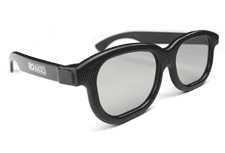


During the past five years, the number of movies released in the U.S. in 3D has increased exponentially, giving audiences a new viewing experience and one which comes with higher ticket prices, which audiences have shown they are willing to pay.
However, an estimated 30 million Americans are not embracing 3D because it causes mild to severe headaches and creates a very unpleasant viewing experience. 2D-Glasses, LLC, has developed glasses that enable people with this problem to watch a 3D movie without getting a headache.
Additional Resources
• Read more 3D HDTV news from HomeTheaterReview.com.
• Explore reviews in our 3D HDTV Review section.
• Read Dr. Milton Chu's article about how 3D affects the eye.
It is estimated that approximately ten percent of the U.S. population has minor eye problems, including muscle imbalances, depth perception trouble, and lazy eye that causes the brain to work harder to process 3D images and results in headaches strong enough to cause significant pain and discomfort. Other symptoms include dizziness and nausea.
The new 2D-Glasses 'disable' the 3D effect, permitting the person to attend a 3D movie with family or friends and not suffer from headaches or other unpleasant symptoms during the film.
When a person watches a 3D movie, there are actually two images being projected onto the screen, causing the screen to be blurry if it is viewed without glasses. 3D glasses have one lens that blocks one image and another lens blocks the other image. So, when a person watches a 3D movie, each of their eyes is seeing a slightly different image. The brain combines these images together, creating the illusion of a 3D image.
2D Glasses block the same image with both lenses, so each eye gets the same picture resulting in a 2D image and an elimination of the eyeball and muscle strain that leads to headaches.
2D-Glasses are available at online retailers such as Amazon.com and at www.2d-glasses.com for a manufacturer's suggested retail price of $7.99.